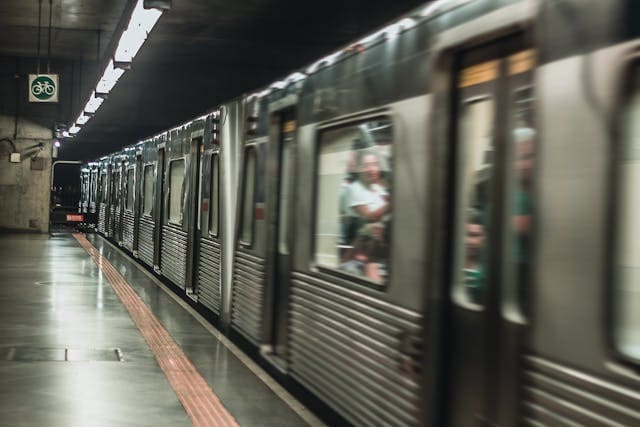The São Paulo Metro is one of the most important public transport systems in Latin America and a source of pride for the people of São Paulo. With an extensive network of lines and stations, it plays a fundamental role in the urban mobility of the largest city in South America.
A little history
Construction of the São Paulo Metro began in the 1960s, with the aim of relieving the city’s chaotic traffic. The first line, the Blue Line, was opened in 1974, connecting the Jabaquara and Tatuapé stations. Over the years, the network has expanded and today has six lines:
- Line 1-Blue : The oldest and one of the busiest, it crosses the city from east to west.
- Line 2-Green : Connects the East Zone to the West Zone, passing through important commercial and cultural centers.
- Line 3-Red : Connects the North Zone to the West Zone, passing through the city center.
- Line 4-Yellow : Connects Barra Funda to Pinheiros, passing by important universities and hospitals.
- Line 5-Lilac: Connects Capão Redondo station to Moema station, with several integration stations with other lines.
- Line 15-Prata: A monorail line that serves the East Zone, with plans to expand to other regions.

The importance of the Metro for São Paulo
The São Paulo Metro is essential to city life, offering several benefits:
- Reducing pollution: By encouraging the use of public transport, the Metro contributes to reducing the emission of polluting gases and congestion on the streets.
- Time saving: The Metro is a fast and efficient means of transport, allowing passengers to save time on their journeys.
- Integration with other modes: The Metro integrates with other means of transport, such as buses and trains, facilitating urban mobility.
- Urban development: The construction of new Metro stations boosts urban development in the regions where they are located.
- Accessibility: The Metro has several measures to guarantee accessibility for people with disabilities, such as elevators, ramps and Braille signage.
Challenges and the future of the Metro
Despite its importance, the São Paulo Metro faces several challenges, such as overcrowding during peak hours, the need to expand the network and maintain the infrastructure.
To face these challenges, the São Paulo Metro Company (CMSP) has invested in several projects, such as the expansion of existing lines, the construction of new lines and the modernization of trains and stations.
The future of the São Paulo Metro is promising. With new investments and the growing awareness of the population about the importance of public transportation, the Metro will continue to be one of the pillars of urban mobility in the city.
São Paulo Subway Fares and Schedules: A Complete Guide

The São Paulo Metro is one of the city’s main means of transportation, transporting millions of passengers every day. To make your journey easier, it is important to know the system’s fares and operating hours.
Sao Paulo Subway Fares
São Paulo Metro fares may vary depending on the type of ticket and payment method. The main types of tickets are:
- Single Ticket: Allows use on buses, subway and CPTM trains. The fare varies according to the number of trips and the integration time.
- Bilhete Único Expresso: Allows unlimited travel for a set period, such as one day or one month.
- BOM Card: A smart card that can be recharged and used on various means of transport in the city.
For more detailed information about fares, visit the official São Paulo Metro website: https://www.metro.sp.gov.br/sua-viagem/bilhetes-cartoes/tarifas-do-metro/
São Paulo Metro Operating Hours
The São Paulo Metro operates every day of the week, with some variations in the opening and closing times of the stations. In general, the first train leaves around 4 am and the last one around midnight.
It is important to consult the official São Paulo Metro website for accurate information on the opening hours of each station: https://www.metro.sp.gov.br/sua-viagem/horarios/
Tips for Using the São Paulo Metro:
- Plan your trip: Use the official Metro app or other transport apps to plan your route and find out which is the best station to get on and off.
- Avoid rush hour: If possible, avoid using the subway during rush hour, such as when going to and from work, to avoid crowds.
- Top up your ticket: Make sure your ticket has enough credit to make the trip.
- Respect the rules: Follow the instructions of metro employees and respect other passengers.
Note: The information presented here is subject to change. Always consult the official São Paulo Metro website for the most up-to-date information.
By following these tips and information, you will be able to use the São Paulo Metro more conveniently and safely, making your journeys around the city easier.



